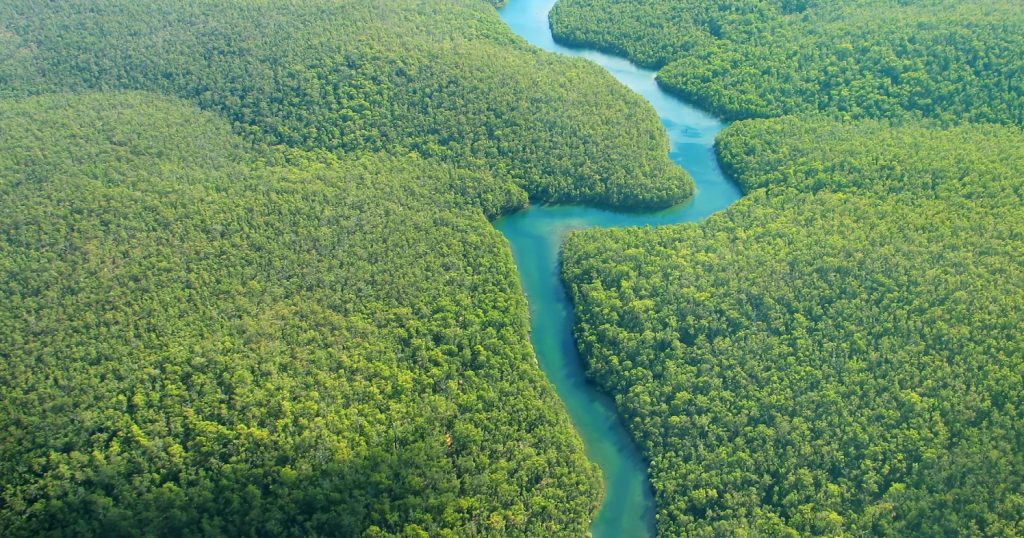The Past, Present and Future of Payments for Ecosystem Services
Rockefeller Foundation Bellagio Center
A technology revolution is opening the way for countries to combat escalating environmental problems – from debilitating drought to devastating floods – as the impact of climate change threatens food supplies, economies, and the very existence of coastal cities and communities.
Top experts from around the world are gathering in Bellagio, Italy from September 5 to 9 as they explore cutting-edge opportunities to help solve some of today’s toughest environmental challenges. They’ll be looking to apply new forms of data and emerging technologies to conservation efforts, particularly through an approach known as “payments for ecosystem services,” which, for example, gives material value to forests and the critical services they provide when left standing – like carbon storage, clean water, and biodiversity. The clock is ticking for these new incentives to enter the mainstream in order to finance activities like restoration of coastlines, our first line of defense against rising sea levels and unprecedented storms.

Together in one room, these experts will look for ways to accelerate the adoption of smarter policies to protect the “natural infrastructure” that is our planet’s most potent weapon against climate change.
DOWNLOAD THE AGENDA DOWNLOAD THE ATTENDEES’ LIST
What is PES?
PES is really an evolution of the more traditional conservation strategies of protected areas – one that explicitly engages the rural communities that manage, deliver and conserve these ecosystem services, with real benefits flowing back to these communities. Not only do the array of PES instruments give shape to new investment into rural and local communities including indigenous peoples, but it opens up a broad sweep of new products and markets around an emerging green economy and infrastructure.
To get a more tangible sense of PES in action, see these examples:
- Peru harnesses ancient canal system to tackle Lima water shortage – The Guardian
- Peru Approves New Innovative Environmental Policies – Viewpoints blog
- Peru’s new environmental policies: What are they and will they work? – Mongabay
- World Water Week 2016 Shines Spotlight on Sustainable Development – Viewpoints blog
- Millions Of Dollars Now Flowing To Indigenous Ecosystem Service Programs In Brazil – Ecosystem Marketplace
- Payments for Ecosystem Services: A Primer – Ecosystem Marketplace
This conference will bring together many of the world’s thought leaders on PES as well as “unusual suspects” that can help us understand new opportunities to scale up PES – including representatives of national and global finance, government ministries and agencies, the technology sector, academics, and local communities.
New Technologies for a Green Economy
The workshop will explore the explosion of new technologies and their potential for overcoming technical and political barriers to PES adoption. These advances will likely be part of any forward-looking strategy, resulting in a much more resilient emerging green economy.
Among the most promising developments:
- Satellite remote sensing makes it possible to cheaply and rapidly gather data of the entire planet up to 3 meter resolution, good enough to detect individual trees or field crops. Existing freely-available systems can monitor evapotranspiration – water use by crops – at 30 meter resolution or better.
- Ground, UAV and water sensors can measure soil and water conditions and automatically communicate this information, complementing and calibrating satellite data.
- Cloud-based computation can automatically process raw sensor data, yielding user-friendly information for program managers and obviating the need for scarce and expensive technical experts.
- Hydrological models can combine remote and ground sensing data to impute flows of water and nutrients.
- Mobile phones and mobile money have placed billions of rural dwellers within reach of reporting and payment systems. For example, Give Directly uses technology to identify and reliably transfer funds to extremely poor people in Kenya, with very low overhead costs.
- Blockchain technology, pioneered by Bitcoin, provides a public and tamperproof record of transactions and is being investigated by financial institutions as a means for more efficiently managing financial transactions.

Ensuring Benefits for Communities
The PES approach is a central component of revaluing ecosystems with direct implications for securing livelihoods. Properly conceived, a payments for ecosystem services approach holds great promise for poverty alleviation. PES can provide new and diversified income streams for local communities. Regular payments can strengthen property rights and governance institutions, empowering local communities. By signaling natural capital’s values, local conservation efforts can be strengthened.
Despite this promise, concerns have been raised over whether valuing services may, instead, result in communities losing access to local resources or undermine their property rights. This criticism has largely focused on REDD projects but it extends to PES more generally. However, to date there has been surprisingly little research empirically assessing the effects of PES on measures of social welfare, and the results of existing research have been mixed.
This conference will dedicate part of the discussion to assessing the complex relationships between PES and improving well-being. Participants will review the state of knowledge from published research as well as their own experiences in the field. Looking forward, participants will discuss how to strengthen our understanding of when PES promotes social welfare and when it may actually prove harmful. The potential benefits of drafting a PES “Code of Conduct” or “Best Practice Guidelines” will also be considered.
